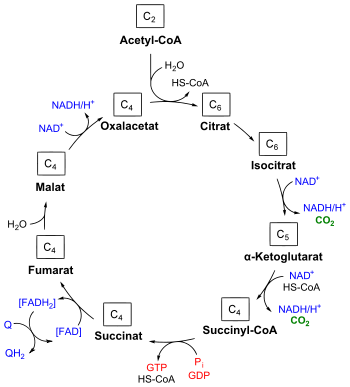Citric Acid Cycle:
The citric acid cycle also known as the TCA cycle (tricarboxylic acid cycle) and the Krebs cycle or the Szent-Györgyi-Krebs cycle is a sequence of chemical reactions used through all aerobic organisms to produce energy by the oxidization of acetate derived from carbohydrates, fats and proteins into carbon dioxide. Additionally, the cycle gives precursors involving certain amino acids as well as the reducing agent NADH which is used in numerous biochemical reactions. Its middle importance too several biochemical pathways suggests in which it was one of the earliest established elements of cellular metabolism and should have originated abiogenically.

The name of this metabolic pathway is derived from citric acid which is a type of tricarboxylic acid which is first consumed and then regenerated through this sequence of reactions to complete the cycle. Additionally, the cycle consumes acetate (in the creation of acetyl-CoA) and water that reduces NAD+ to NADH, and produces carbon dioxide. The NADH produced through the TCA cycle is fed into the oxidative phosphorylation pathway. The net result of these two closely connected pathways is the oxidation of nutrients to produce usable energy in the form of ATP.